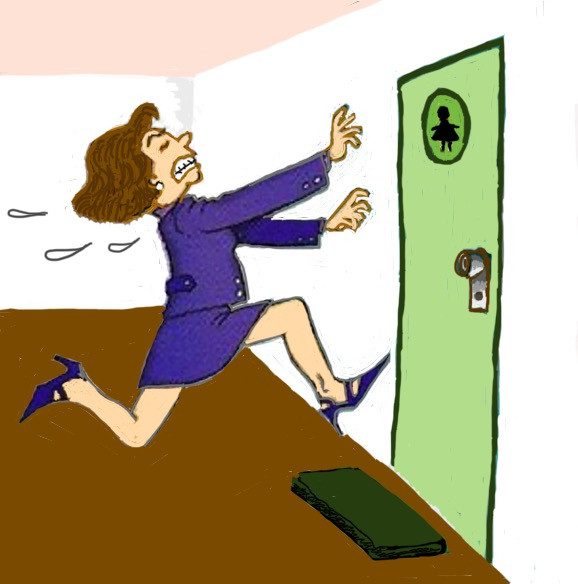Fecal Incontinence or Anal Incontinence is a condition when one can not reliably contain the content of the rectum, so sometimes accidents happen, gas or stool material slips out inadvertently.
In the early years of life this is natural, the control of the anal muscles is unconscious. Then with potty training we learn to delay the emptying of our rectum when the place and time is appropriate i.e. in the toilet. For this control however we need a healthy rectum, which can relax to hold the content. We need healthy anal sphincter muscles, which can hold all day and relax when we want. And we also need healthy stools – controlling liquid stool is much more difficult, even with a perfect ano-rectum accidents can happen.
For everyday approach this much is enough to know about fecal incontinence, but to satisfy special interests it may be important to know that anal incontinence is further classified by functional characteristics: urge fecal incontinence, passive fecal incontinence and mixed fecal incontinence.
Fecal Urgency, Urge Anal Incontinence
Fecal urgency is an urgent call to the toilet to defecate. It happens to anyone in case of gastrointestinal infections. And it settles within a few hours or days.
Fecal urgency occurring regularly while the stool is normal is however a different problem. If accommodating lifestyle (staying close to the toilet when stool is expected) allows to completely avoid accidents we talk about fecal urgency. If accidents happen, fecal leakage occurs before reaching the toilet, we are talking about fecal urge incontinence. Fecal urge incontinence is mostly coming from a problem with the strength of the external anal sphincter or with the capacity or compliance of the rectum as a storage organ.
Fecal soiling, Fecal smearing, Passive Anal Incontinence
Fecal soiling is a passive loss of fecal smelling mucus, or liquid or solid fecal material not in the period of time before reaching the toilet, but rather unrelated to stooling. It is mostly related to the function of the internal anal sphincter, which is supposed to keep the anal opening closed in between toilet times. Gas incontinence is part of the passive anal incontinence problem complex.
Mixed anal incontinence means the coexistence of urge as well as passive anal incontinence.
What signs and symptoms one has with this problem?
Fecal Incontinence is a symptom itself. With urge type of fecal incontinence the patient is complaining of not getting to the toilet on time, ending up loosing some fecal matter into the underwear. This amount can be from very little to a full bowel movement. When fecal urge incontinence is mild, there is only an lack of confidence of making it to the toilet on time; there is a consciousness to stay close to toilet in the hours when normally the bowel movement comes, because defecation can not be deferred longer than a few minutes or even less. With passive fecal incontinence there are no issues to get there to the toilet on time, rather there is a fecal soiling noticed in the underwear far from toilet times. Mild forms of passive fecal incontinence only affects control of gas: occasionally, with sudden change of position or cough, sneeze, bowel gases can slip out through the anal opening without the patient planning to release them. This is called gas incontinence.
